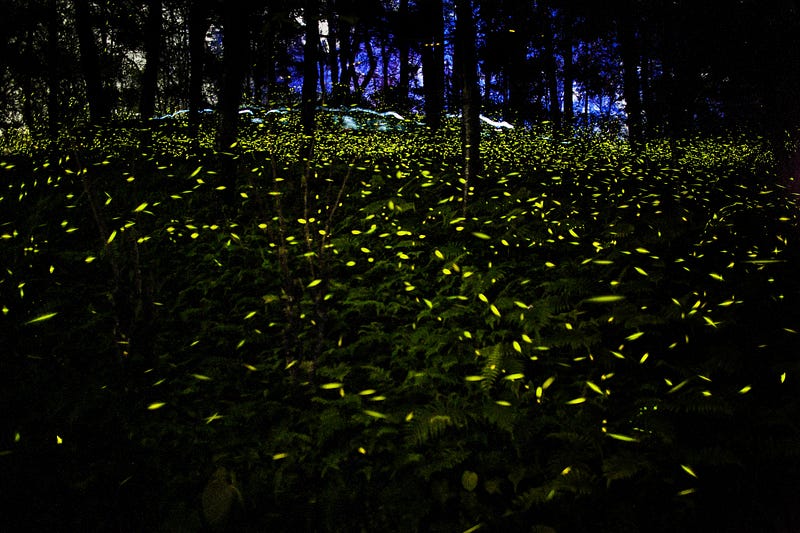
The ‘femme fatale’ is a classic character trope in folklore, literature, and other fiction going back centuries. It involves a female character using trickery and seduction to lure men and then attacking or victimizing them in some way, sometimes with fatal consequences. Of course, authors have often used this character type as a form of social commentary, but I intend no such thing for my story this week. Rather, it serves as a background to the first example of aggressive mimicry this season in a group of animals that most people find both innocuous and soothing: fireflies.
Fireflies, in some places referred to as lightning bugs, are a group of beetles that possess the ability to produce light from their abdomens through a chemical process known as bioluminescence. These lights are used in signalling other members of the same species for the purpose of courtship and mating. The light pattern, as well as accompanying chemical signals, can serve as a species identifier as well as demonstrate the fitness of the individual as a potential mate. In this way, fireflies use their light signals for sexual selection in a similar manner to how a male peafowl uses his tail feather display.

However, some species of fireflies have adapted to take advantage of this mate signaling and have come to mimic the patterns of other species. In particular, females belonging to the genus Photuris , a group of over 60 species native to eastern North America from the coast to Texas, are known for mimicking the signals of receptive females of unrelated firefly species. What benefit could such mimicry have for these individuals? They cannot mate with the suitor that this behavior will attract. If you cannot tell from the title of this week’s story, Photuris are predatory beetles and the adult females will eat any unfortunate male fireflies of other species that they manage to deceive. Because of this, the genus is sometimes referred to as the ‘femme fatale lightning bugs’.
This is an excellent example to help conceptualize the difference between defensive and aggressive mimicry. Many examples of the former involve disguising oneself as something dangerous (even though one is not) in order to avoid harm. However, in the latter, the mimic is disguised as something harmless (even though it is not) in order to avoid detection as a predator or parasite and do harm to another species.

However, there is nothing ‘immoral’ about the behavior of these fireflies, or any of the other aggressive mimics we will discuss in the coming weeks. These species have simply developed what humans might consider a ‘devious’ way of attracting and capturing food. In fact, one of the more fascinating aspects of this particular example is that, despite them belonging to the same genus, evidence suggests that the mimicry of many Photuris species evolved independently alongside their particular prey. This kind of mimicry is a survival strategy like any other, and it is clearly successful considering that it has cropped up numerous times in a variety of different taxa.
As before with the defensive mimics, picture yourself in the role of the duped species. You are a male firefly. Millions of years of evolution and instinct drive you to produce as many offspring as you can in order to pass on your genetic material to the next generation. Your time is limited because most firefly species only live a few months as adults. Therefore, when you see the distinctive light patterns that indicate a sexually receptive female of your species you immediately fly in to investigate. Unfortunately for you, this female firefly is not what she appears to be. Her mimicry is convincing, but she is a predator, not a mate. A more careful approach to such signals would reduce the chances of getting eaten, but would also reduce the chances of successfully mating with real females of your species, a difficult trade-off to manage.
Next week, we’ll be look at another aggressive mimic, one that does not copy its prey species, but a different one that allows it in close unsuspected. If you like my stories, please like, subscribe, and share them. If you have an idea for a topic for a future season, let me know and if I use it, I’ll give you a shout out in my introductory post.